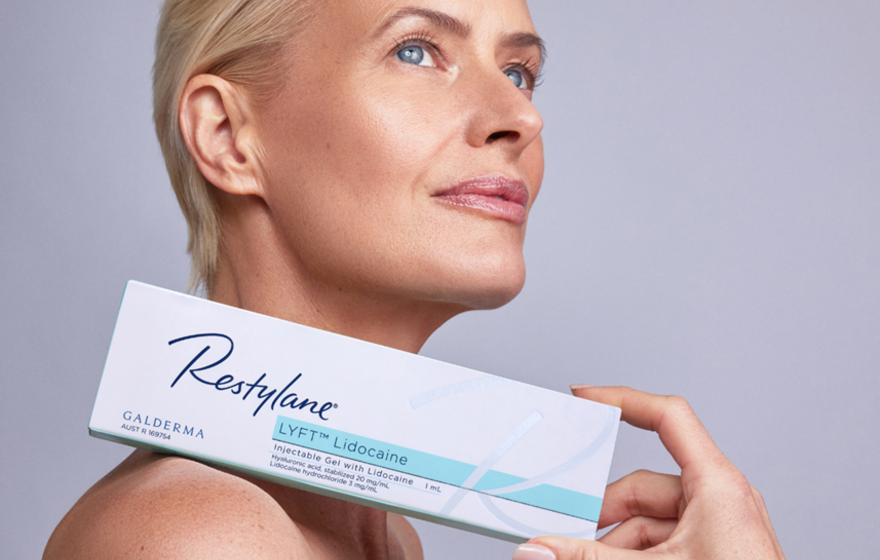
Dermal fillers have become one of the most common facial aesthetics procedures. Despite this, there are still many misconceptions and fears when it comes to dermal fillers and other aesthetic treatments. Keep reading to find out more.
Misconception 1: Aesthetic treatments with fillers look ‘fake’
The fact is that most people desire a natural-looking result. But what is a natural-looking result when it comes to facial aesthetics?
What do experts say about natural-looking results?
When used correctly, fillers can provide a rejuvenation or subtle natural enhancement of facial features - it all just depends on what your individual beauty goals are. We all have a different view on what looks natural, so it’s best to book in a consultation with a qualified healthcare professional and communicate our goals to achieve the best result. Find a clinician who can help you with this here.
Misconception 2: Fillers contain synthetic materials that are bad for you
Fillers are, as the name indicates, used to fill. They are used to fill out a wrinkle or add a bit of volume in the face, and in some cases are used to compensate for the volume loss that often occurs with age. The question is, however, what material is used for these treatments?
In the early days of facial aesthetics such as in the 1940s and 1950s, doctors injected synthetic fillers such as silicon, but things have changed immensely since then.1
In the 1980s and 1990s, collagen-based products were used for the treatment of lines and wrinkles, folds, and furrows associated with the aging face.2 Then in 1996, something revolutionary happened in the burgeoning world of facial aesthetics. RESTYLANE®, the original non-animal stabilised hyaluronic acid (HA) filler was launched in Europe, setting a new standard for dermal fillers.2,3
So, what are fillers made of today?
Today, the main ingredient in almost all fillers is hyaluronic acid, a natural water-binding molecule that can be found in our skin, joints, eyes and other tissues. It keeps our tissues lubricated and flexible.
The hyaluronic acid in RESTYLANE® is derived from bacterial fermentation, instead of from rooster combs (from a rooster's head).2 Today, most fillers for aesthetic use are of non-animal origin. This non-animal origin makes the range of RESTYLANE® fillers suitable for vegans to consider.
Although fillers are now based on a natural substance, many fillers contain a small amount of a synthetic cross-linker, such as BDDE (1,4-butanediol diglycidyl ether). Cross-linking stabilises the HA gel, making it last longer, as HA in its natural form is rapidly degraded by the body within a few days.4
What about BDDE, is it bad for you?
Many studies into BDDE and how the hyaluronic acid in fillers is broken down by the body have been conducted. The studies found that the filler (including BDDE) is broken down into harmless byproducts or byproducts that are identical to substances already found in the skin.1
Remember that, as with any treatment, you could still experience a side effect from a filler treatment. Therefore, you should always consult a qualified healthcare practitioner who can explain expected results as well as potential side effects for your individual health concerns.
Misconception 3: Aesthetic treatments with fillers are permanent
Another misconception, or fear, is that fillers are permanent and that if you’re not happy with your treatment you’ll be stuck with it forever. As has been explained above, the body will eventually degrade the filler, even if it has been cross-linked.
How long the filler lasts differs from person to person, and also depends on where the filler is injected, as well as on the type of filler. Filler tends to degrade faster in more 'dynamic' areas of the face that experience more movement, such as the lips. In general, a treatment will last from several months to up to a year or two, depending on
the product used, the area treated, the number of touch up treatments and individual patient characteristics. For example, the filler Restylane® LYFT™ can last up to 24 months with one retreatment.5
Misconception 4: Fillers are only used to treat the lips and cheeks
If you are new to aesthetic treatments, you might associate fillers with lips and cheeks. Fillers are one of the most versatile aesthetic treatments and can be used in a number of places apart from the lips and cheeks.
Fillers can be used to create shape and structure, in the chin or jaw, for example. They can be used to enhance facial contours and to add soft volume and fullness to our facial features. Fillers can also be used to fill out deeper wrinkles and folds and to reduce hollowness under the eyes.
References:
1. De Boulle K et al. Dermatol Surg. 2013 Dec; 39(12): 1758–1766, 2. Gold M. Clin Interv Aging. 2007 Sep; 2(3): 369–376, 3. Ascher B et al. Dermatol Surg 2017;43:389-395, 4. Žádníková, P. et al. Biomolecules. 2022, 12, 251. https://doi.org/10.3390/biom12020251, 5. Huang S and Tsai T. J Drugs Dermatol. 2020;19(9):836–842. TAPS NP18918, NZ-RES-2200016.